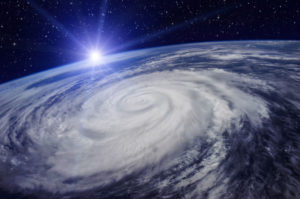American Meteorological Society Releases First-Ever Report Stating Anthropogenic Climate Change Caused Major Weather Extremes
 Last year’s record global heat, extreme heat over Asia, and unusually warm waters in the Bering Sea would not have been possible without human-caused climate change, according to new research in Explaining Extreme Events in 2016 from a Climate Perspective, a report published as a special supplement to the Bulletin of the American Meteorological Society (BAMS).
Last year’s record global heat, extreme heat over Asia, and unusually warm waters in the Bering Sea would not have been possible without human-caused climate change, according to new research in Explaining Extreme Events in 2016 from a Climate Perspective, a report published as a special supplement to the Bulletin of the American Meteorological Society (BAMS).
In the six years scientists have been producing this annual report, this is the first time they have found that extreme events could not have happened without human-caused warming of the climate through increases in greenhouse gases.
Human influence was found to have increased the intensity and likelihood of terrestrial heat events around the world, in addition to affecting the severity of the El Niño, the severity of coral bleaching in the Great Barrier Reef, and the warmth of the North Pacific Ocean that impacted fisheries and other resources in the Pacific.
The new report presents 27 peer-reviewed analyses of extreme weather across five continents and two oceans during 2016. It features the research of 116 scientists from 18 countries looking at both historical observations and model simulations to determine whether and by how much climate change may have influenced particular extreme events.
As revealed in this year’s report, the influence of human-caused climate change has become strong enough to push some heat events beyond the bounds of natural variability alone. In addition, scientists are reporting increasing confidence in their findings that human-caused climate change is impacting temperature-related events on land and in the oceans.
Major findings of the report can be broken into three categories:
Global heat: The record mean surface temperature for the world in 2016 was found to be “only possible due to substantial centennial-scale anthropogenic warming.”
Asia heat: “The 2016 extreme warmth across Asia would not have been possible without climate change.” Although El Niño (warming tropical Pacific waters) was expected to warm Southeast Asia in 2016, the heat in the region was unusually widespread. Another study produced evidence suggesting that a deadly April heat in Thailand, which devastated crops and broke records for energy usage, “would not have occurred in the natural climate” unwarmed by human influences, “even under the influence of a strong El Niño.”
Marine hot spots: Ocean temperatures in the Gulf of Alaska, Bering Sea, and off northern Australia were the most elevated in 35 years of satellite records, leading to massive bleaching of the Great Barrier Reef and one of the largest harmful algal blooms ever off the Alaska shore. Natural climate variations played a part, but one study finds “it was extremely unlikely that natural variability alone led to the observed anomalies,” and another study finds the blob of sub-Arctic 2016 warmth “cannot be explained without anthropogenic climate warming.”
Read the full report here.
